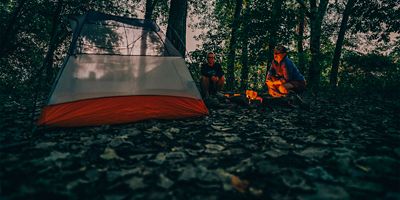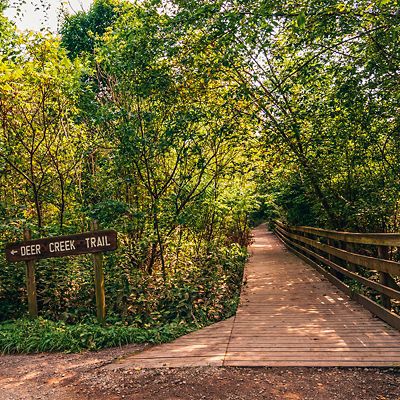
There’s nothing like pedaling for several days in a row with no cars to worry about. One of the country’s best places to experience the freedom of long-distance cycling is on the Great Allegheny Passage. It starts in the heart of Pittsburgh and winds nearly 150 miles to Cumberland, MD, cruising past rivers, careening over soaring bridges, delving through tunnels, and connecting standout parks as it goes. On a ride along its length, you’ll trace the Monongahela, Youghiogheny, and Casselman Rivers; skirt the Laurel Highlands; get within spray range of dozens of waterfalls; and enjoy expansive views over tree-covered hillsides.
The Great Allegheny Passage (GAP) makes for an excellent multi-day bike tour, with overnights in charming B&Bs, campgrounds, or small-town hotels along the way. Its many highlights are accessible destinations for a day trip, too. The fairly flat, crushed limestone surface draws everyone from endurance cyclists to families, all eager to explore some of western Pennsylvania’s finest scenery.
The GAP, which was constructed between 1978 and 2013 and links old railroad passages and some other trails, was the first route to be inducted into the Rails-to-Trails Conservancy’s hall of fame. The classic thru-biking trip takes four days, riding 30 to 40 miles each day; nearby bike rentals and shuttle services make it easy to customize your own trip. And if you haven’t had enough after completing the final mile, no need to stop: The GAP connects to the C&O Canal Towpath for a cycling route all the way to Washington, D.C.
A variety of different bike types work well for a GAP trip, including cyclocross, mountain, touring, and hybrids (a road bike isn’t ideal unless the trail is totally dry). Spring through fall bring the best conditions for a multiday ride, and the Great Allegheny Passage Conservancy maintains a list of lodging options so you can customize your trip according to your preferred accommodations (i.e., campsites versus boutique inns) and preferred daily mileage.
So what’s all the fuss about? Here’s a taste of our favorite stops, starting in downtown Pittsburgh and riding southeast to the trail’s terminus in Cumberland.






